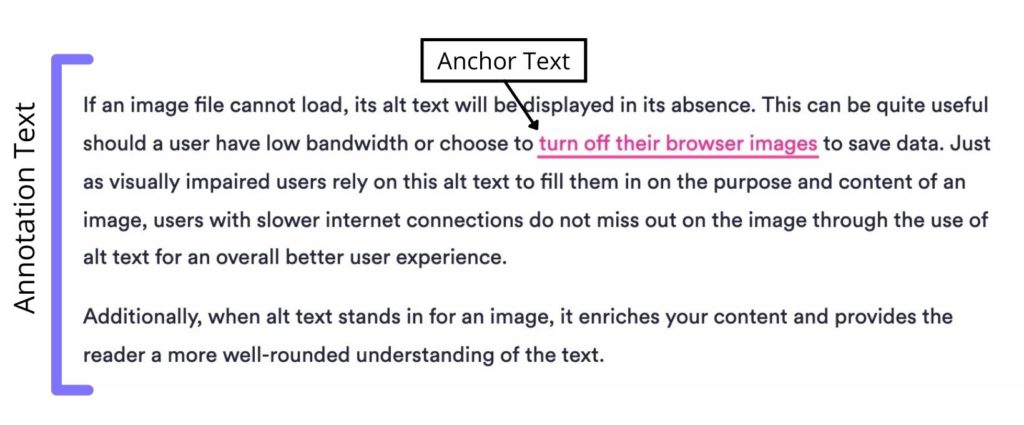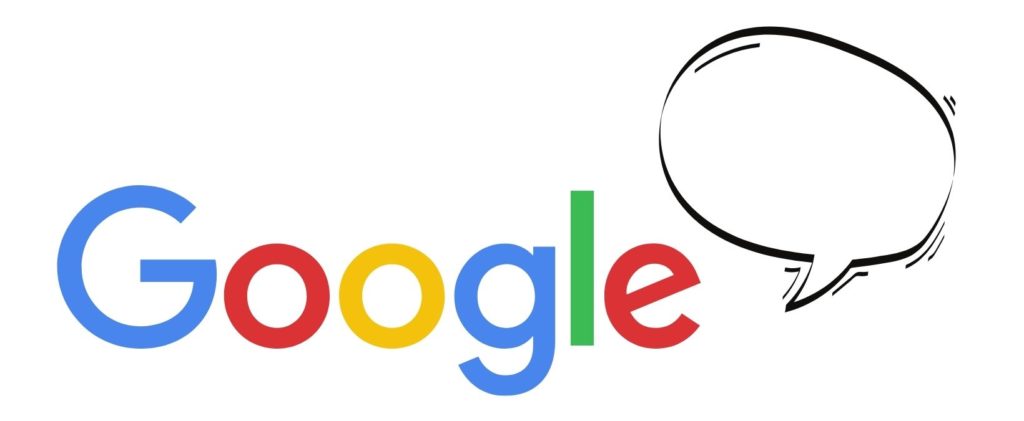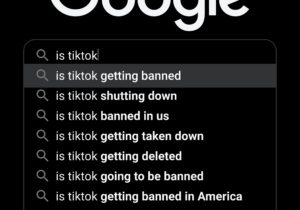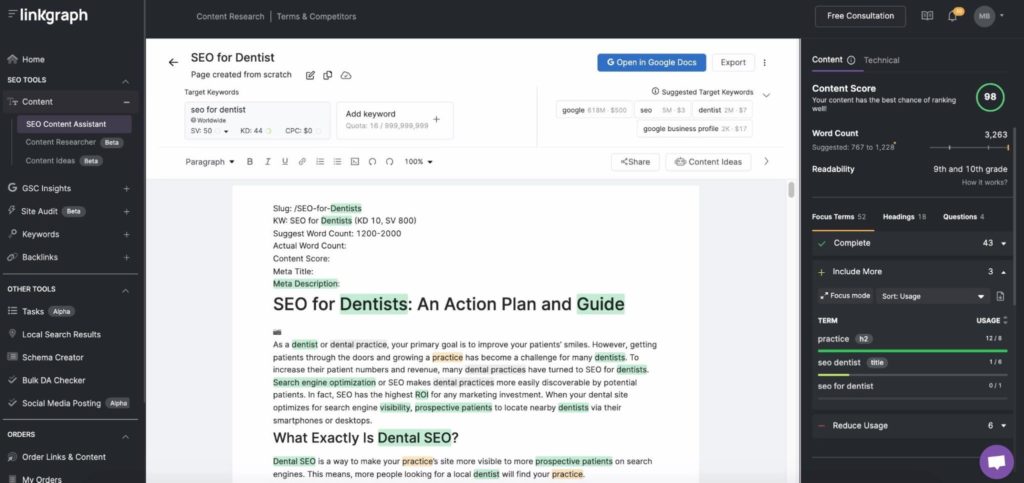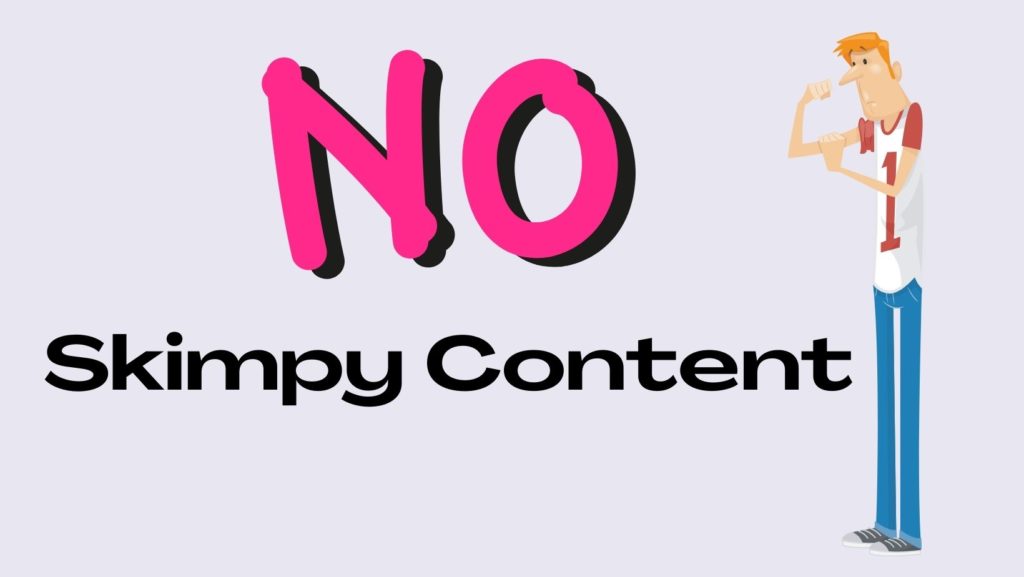How to Maximize the SEO Power of Links with Annotation Text
SEOs and site owners should commit to maximizing the value of our links with well-optimized annotation text. The process is pretty simple, and here’s how to do it.
There are few SEO elements more complex than links. While it’s common knowledge that strong internal linking structures, anchor text, and high-quality backlinks are vital to strong SEO, many content writers tend to gloss over annotation text. This can be a long-lasting and costly mistake. Annotation text for SEO may be the key to better use of anchor text.
Let’s all commit to maximizing the value of our links with well-optimized annotation text. The process is pretty simple. In fact, as an SEO writer, you’re likely 90% of the way there. As for the remaining 10% this article will walk you through how to write quality annotation texts that help pack every possible ounce of link equity into your internal, external, and backlinks.
What is SEO Annotation Text?
Annotation text is the text that surrounds an outbound link that a web crawler can use to better understand the linked page. It is highly likely web crawlers will index text beyond the sentence level in relation to a hyperlink. This suggests annotation text can include words and phrases that span the section, paragraph, or even entire document where the hyperlink appears.
Most importantly, Google’s algorithm patent suggests this text is a ranking factor.
In the Words of Google
Reading a patent is not what most people would consider light reading. However, looking at specific sections can be extremely insightful in regards to SEO.
A system comprising: at least one processor; an index for searching documents, the index including terms associated with documents; and memory storing instructions that, when executed by the at least one processor, perform operations including obtaining, via a web crawler, a source document, identifying, in the source document, annotation text, the annotation text being text within a predetermined distance of an outbound link to a target document and the annotation text including at least one term, storing in the index an association between the term and the source document, storing in the index, responsive to identifying the annotation text, an association between the term and the target document, identifying, responsive to receiving a query that includes the term, the source document and the target document as associated with the term in the index
the annotation includes a text passage extracted from a respective source document, wherein the text passage is within a predetermined distance of a respective outbound link.
the annotation includes text outside of an anchor tag in the source document.
Diving into Google’s Web Crawler System & New Annotation Description Patent
Annotation text is an SEO element developed from Bill Slawski’s research into an update of Google’s algorithm patent. Bill Slawski, who analyzed Google’s 2007 anchor text patent realized there was an interesting discrepancy in how Google described their anchor text indexing. First, the patent describes that their anchor text indexing system will store at least one term in association with the outbound link. However, the patent goes on to explain that the annotation includes a text passage that is a predetermined distance of an outbound link.
Bill Slawski noticed that Google added geo-semantic indexing for text surrounding the anchor text.
This means that the text within a certain distance of the anchor text is indexed to better understand the meaning of the linked page.
How Does Annotation Text Affect SEO?
Google’s NLP algorithms use artificial intelligence to better understand human language. This provides Google with a better understanding of any given web page’s content. As Google’s bots crawl a page they index these NLP signals in order to provide searchers with better search results.
While anchor text is a primary indicator of the content on the linked page, Google’s NLP algorithms also index information from the surrounding text as a secondary indicator.
By including surrounding text in Google bot indexing, Google is able to provide the best user experience since the surrounding text provides insight into the relevance of the outbound link. The better Google understands the linked page, the more precise its search results can be.
Your Site’s SEO & Text Around Your Links
Providing Google’s web crawlers with more information about a page is always a better approach to trying to rank for Target Keywords, especially when it comes to off-site syndication and guest posts.
Furthermore, because most SEO content creators are solely focused on optimizing anchor text, you can gain a competitive advantage by optimizing for annotation text in addition to anchor text.
TLDR: Annotation text gives your outbound links contextual meaning.
How Strongly Does Annotation Text Affect the Meaning of a Link?
This is where things get a little sticky. As we know, Google keeps all of the signals used for PageRank’s indexing secret. “But there’s a patent…” Well, just because Google registered a patent that describes annotation text doesn’t guarantee that PageRank uses this particular patent.
It’s likely that Google does since this patent was registered around the time they were developing their SMITH algorithm. However, Google has never confirmed it.
The Structure of Annotation Text
The word annotation means notes or in-text notation. So, when Google describes the process of pulling annotations through indexing, their crawler is likely pulling hints as to the link meaning from within the text. This, like taking notes on a literary piece has an amorphous structure.
When it comes to the relationship between anchor text and annotation text, I often liken this to an atom. The anchor text is the dense center: the nucleus. The annotation text is the electrons circling this center. Both the center and the surrounding text define the atom, however, the anchor text is the most reliable in terms of its relationship to meaning since the electrons can be more difficult to pin down the electrons.
This often means there is no perfect version of a page. The web crawlers system will pull data from a “predetermined distance of an anchor tag.” So, commonsense says to make sure the most important words are nearby your anchor text but you maintain the quality of your content throughout the page.
What Is Anchor Text?
Unsure of what anchor text is? It’s a simple concept. Anchor text is the text that is presented within a webpage and when clicked, directs the browser to navigate to a URL. Most often, the text is a description or explanation of the information found on the linked webpage.
For example, “an update of Google’s algorithm patent” in the previous section is the anchor text that links to the referenced patent in the Patent Database.
Google’s web crawlers use anchor text to determine the topic of the page to which the link is pointing. This information is gathered as the bot works its way through a sitemap.
Is Annotation Text the Same as an Annotation Link?
No. While annotation links or annotated links have many meanings in the world of web development, this phrase is not interchangeable with annotated text.
Annotation links can be hyperlinks that allow video viewers to skip ahead to the section of the video that’s most relevant to their needs. Some people use “hyperlink annotation” as a synonym for “anchor link” when a photo, video, or audio file stands in place of text.
Techniques for the Best SEO Annotation Text
So, how can you make the most of annotation text for improved SEO? Most SEO content optimization software like Yoast SEO will ensure you have the foundations of keyword basics. However, these tools won’t ensure you’ve optimized your anchor text or surrounding text. however, with some attention to the text surrounding your links, you can turn a basic paragraph into a text machine that fully optimizes your links.
1. Use Focus Term Nearby Your Links On-Page and Off-Site
Annotation text gives you the opportunity to refine how Google understands a webpage. To make the most of your internal links, employ annotation text throughout your site whenever you internally link to another one of your pages.
Additionally, when you’re implementing an off-site backlinking campaign, pay careful attention to what you include in the surrounding text.
2. Identify Focus Terms to Include
Like developing the best quality content, you want to determine the best Focus Terms to use. To do this, you will want to perform keyword research using SEO software.
For this article, we used Search Atlas’s SEO Content Assistant. Use higher importance words in the text nearby your anchor text for the biggest impact. When selecting the most important terms, consider the topical relevance of the Focus Term in relation to the linked page. Even if a Focus Term is your most important term, do not include it if it’s not topically related to the linked page.
3. Incorporate Your Focus Terms Naturally
It likely won’t come as a surprise to you that Google has an aversion to keyword stuffing. This continues to ring true when it comes to the best quality annotation text. While you want to include Focus Terms, you must be strategic about it.
Consider including the most impactful Focus Terms in your annotation text. These are often the most semantically related to your anchor text.
4. Develop the Surrounding Paragraph
If you’re going to make the most of annotation text, you must consider where the anchor link falls within a piece of content. Furthermore, you must also develop the content surrounding the anchor link.
In order to do so, avoid:
- Placing your backlink or most important internal at the tail end of a section
- Using a backlink or high-value internal link in a thin section
- Linking to your site in a bullet point in an off-site article
- Using a high-value link in a chart or table
Annotation Text = Better SEO
When it comes to the best content and the best links, annotation text provides context to your readers about your link. And Google likely uses your annotation text in addition to anchor text to better understand the page you’re linking to. This results in a better experience for your readers and more depth for Google’s algorithms to parse.
When you optimize your off-site outbound links’ anchor text and annotation, you have a better chance of ranking on the SERP #1.
Begin finding the best keywords and Focus Terms with LinkGraph’s free Keyword Research Tool or sign up for Search Atlas for full access to all your Focus Terms.










































































